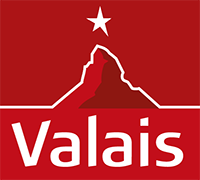Seventh heaven, high above Zermatt
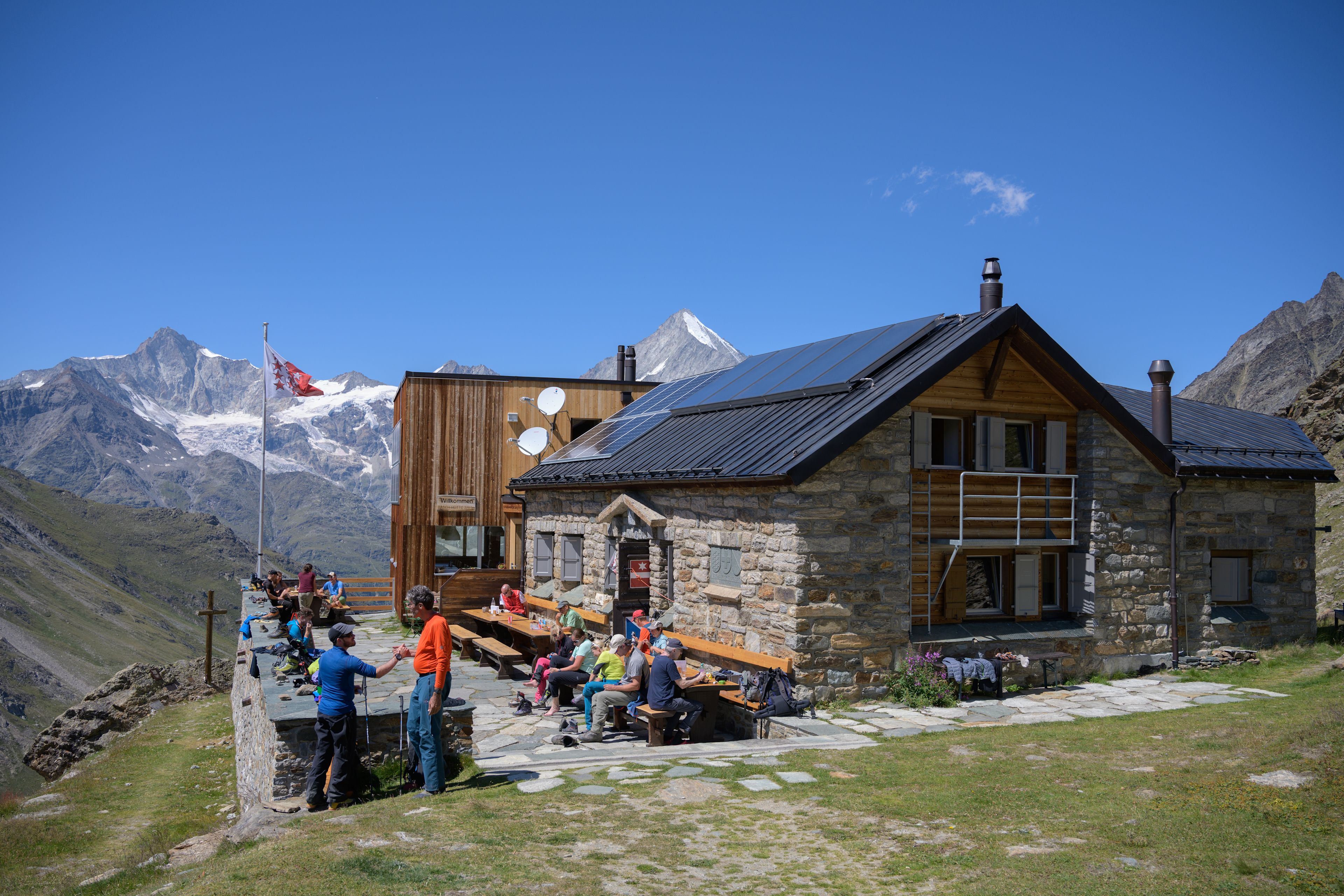
Renata Schmid is the guardian of the Täschhütte mountain hut, which overlooks the Zermatt valley. Here, she enjoys giving guests an experience of another world.
Renata Schmid greets her guests with a cheerful “Guëta Tag!” – literally “Good day!” in local Swiss-German dialect. This is her third season as guardian of the Täschhütte mountain hut; the rest of the year, the 57-year-old lives in Ausserberg, also in Valais. She adores being in the mountains. She has already worked at the Täschhütte before, from 1984 to 1988, as assistant to the guardian at the time – the legendary mountain rescuer Alfons Lerjen. Afterwards, for seven years, she was responsible for the old Hörnlihütte mountain hut, run by the Swiss Alpine Club (SAC). During winters, she worked as a waitress at different mountain restaurants in the region.
Renata tells how she always enjoys seeing guests or mountain guides again who she has got to know in previous seasons or on mountaineering trips together. “It’s like harvest festival,” she says over a cup of milky coffee. “Being in contact with people from all over the world means a lot to me.” Her philosophy: “This is a place where everyone is welcome and should feel at home.” Renata always has time for her guests, and tries to ask each one: How was the adventure? Where are you heading next? She also does her best to ensure a good atmosphere: “In a mountain hut, people behave differently. They are more open, more helpful, more grateful. You just have to pay a little attention.”
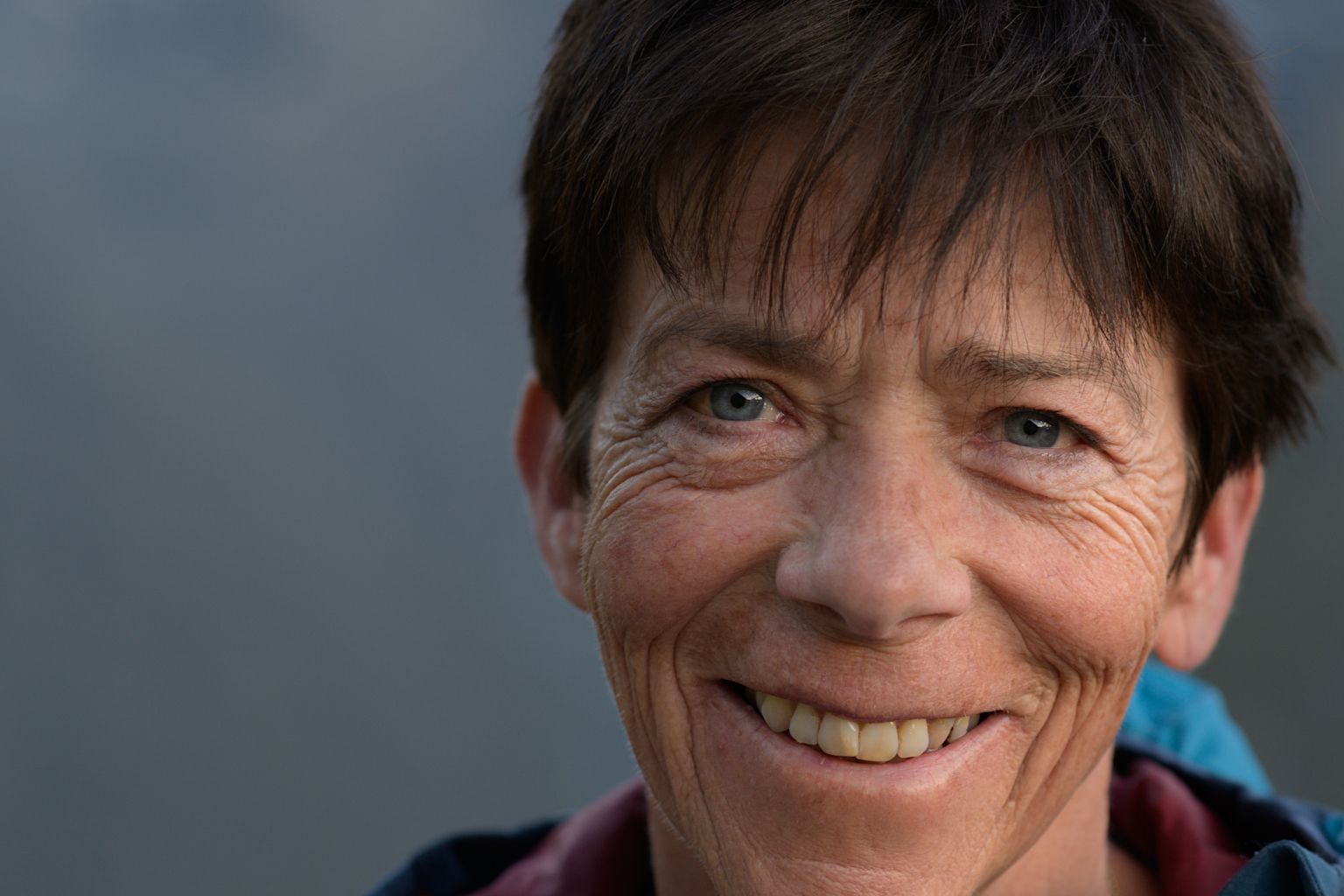
The Täschhütte mountain hut was built in 1945 and extended in 2008, and belongs to the Swiss Alpine Club (SAC) – specifically to Zurich’s Uto section. As of last summer, guests now enjoy mobile phone reception in the dining room. Electricity comes mainly from a small hydropower plant just below the hut, fed by a stream, and also from some new solar panels on the south facade. Renata has a handful of employees to help her. The hut sleeps 80, but during weekends in July and August, it is best to book in advance (www.taeschhuette.ch). Covid-19 created a lot of extra work for the summer 2020 season, “but we managed well,” Renata says. This year, the season will run from mid-June to the end of September. “High season is a challenge. Running a mountain hut isn’t straightforward.”
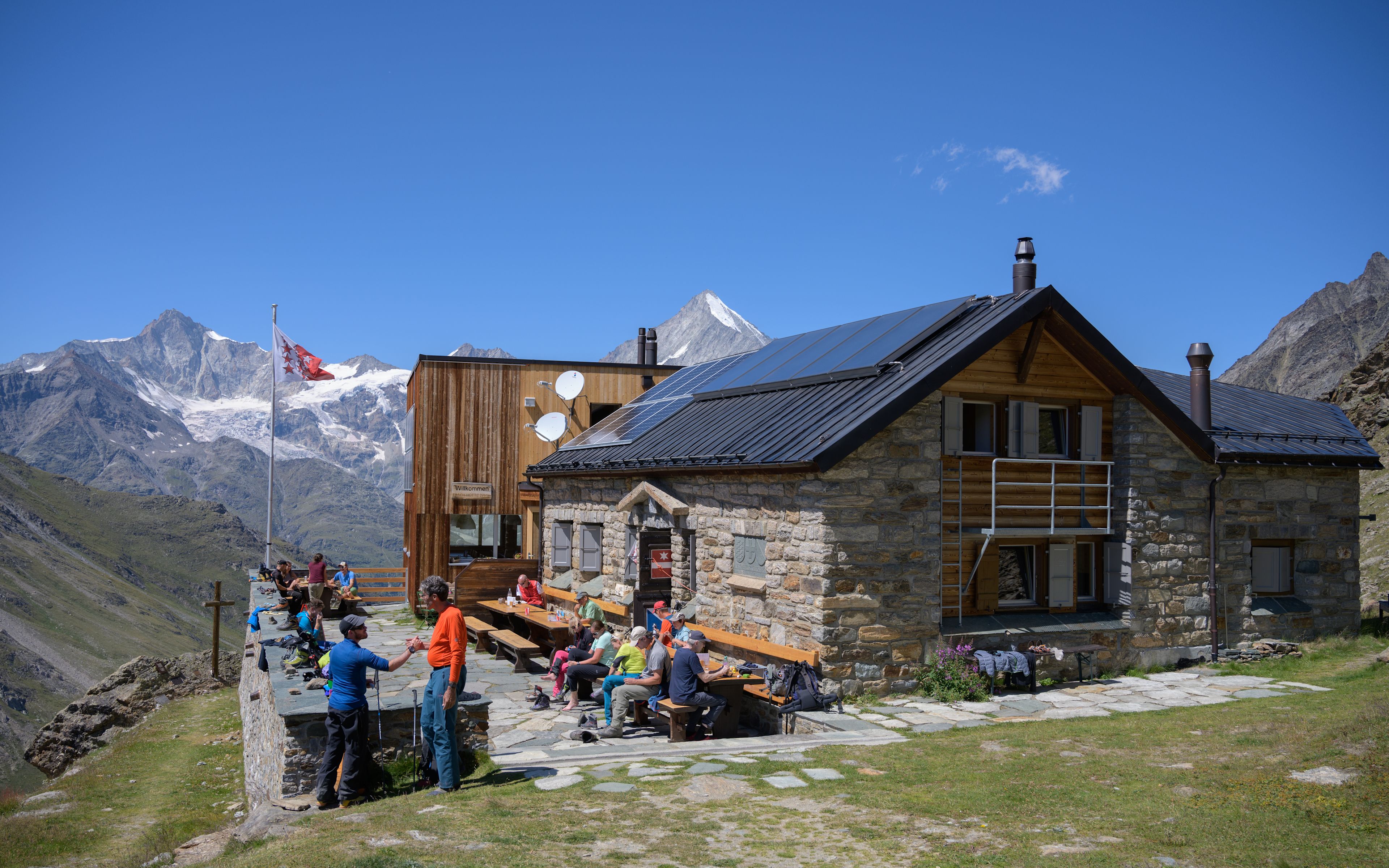
The majority of guests are mountaineers: mostly Swiss and other Europeans. “Visitors from Asia prefer taking the cog train up to the Gornergrat,” Renata says. She also has more and more guests stopping off along a long-distance hike. Many set off from Randa before crossing the nearby suspension footbridge – the longest in the Alps at 494 metres. After a night at the Europahütte mountain hut, they come to Renata before scaling the Pfulwe pass to reach Zermatt.
One of Renata’s favourite times of day is just after 2.30 in the morning, when she has woken up the mountaineers. “Slept well? Ready for the climb?” she asks them one by one, as they eat breakfast. “People are gathering their energy, they’re relaxed, it’s peaceful – I love the atmosphere.” She then goes back to bed and, from 6.30 am, prepares breakfast with her team for the hikers, and finally sets up the terrace. Afterwards, it’s time to start cooking: Rösti, made with fresh potatoes, along with fruit tarts, which have to be ready for when hikers start to arrive for lunch around midday. Beef comes from Galloway cattle belonging to her brother, Stefan. The wine, meanwhile – “Gori Trunk”, a Pinot blend – also comes from Ausserberg. At breakfast, guests drink milky coffee from big cups called “Bochtja”. During the season, a helicopter arrives every 10 days with 650 kilos of supplies: drinks, vegetables, fruit, meat, bread and gas canisters.
It is now evening, and the sun is setting. Renata comes out on the terrace. “Look over there!” she says, pointing to a nearby cliff. Three ibex – a male and two females – are grazing. Now and again, a bearded vulture will glide by: the majestic bird’s territory extends from Zermatt to Saas-Fee. “Up here, everything is simpler and more beautiful than down in the valley,” she says, as she gazes up to the Rimpfischhorn, clad in glaciers. “You’re closer to life.”
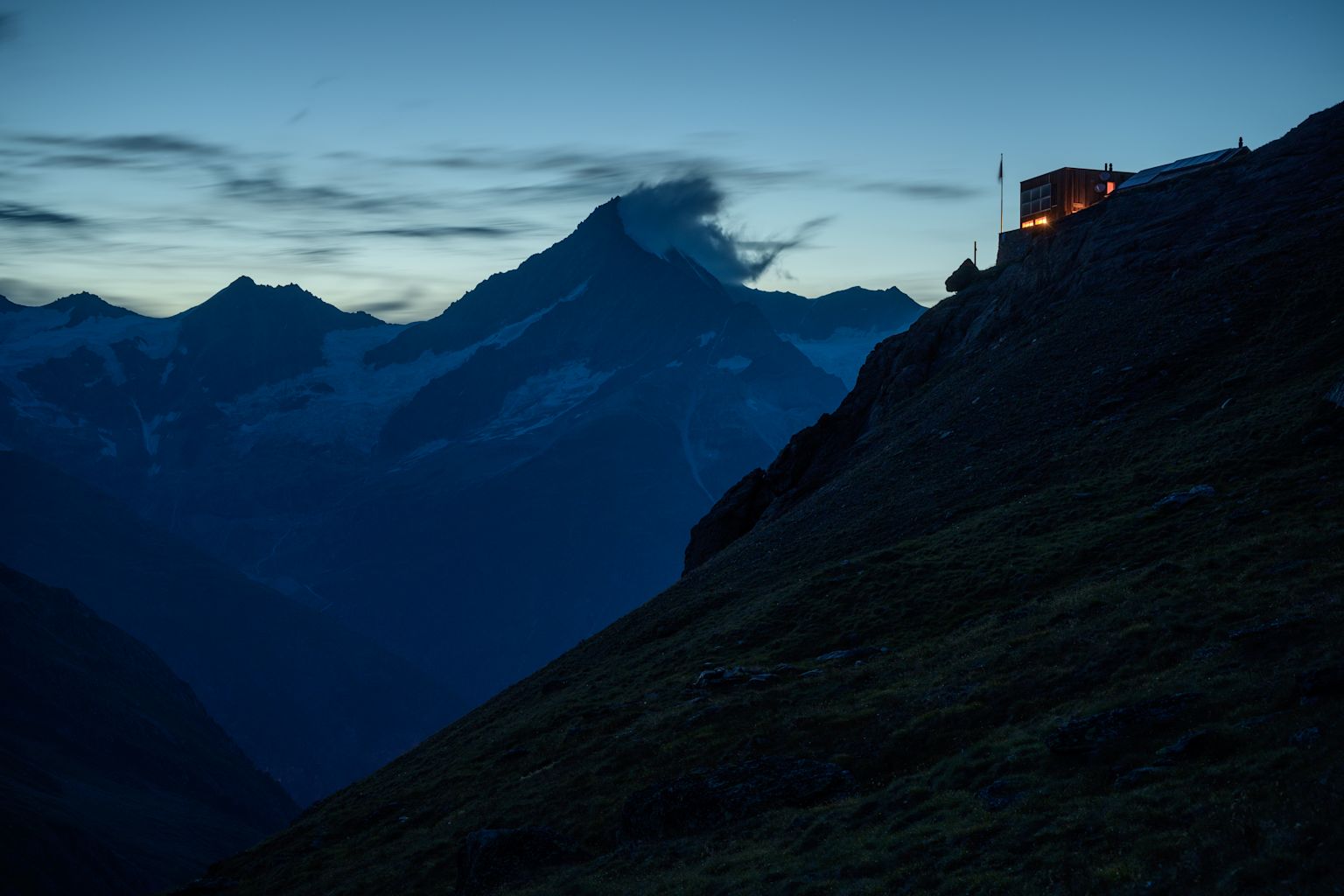
Text: Thomas Kutschero Photographs: Stefan Walter
Published: August 2021
A Valais tradition reborn
Next story

